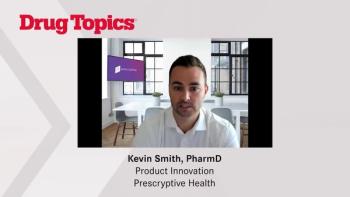
Technology Update: Get free mobile Part D formulary info
Pharmacists and physicians now have free access to Medicare Part D Rx plan formularies via their mobile devices or the Web, courtesy of Epocrates Inc. The information also includes Rx plan co-pay tiers, generic drug options, and coverage restrictions.
Use X12N 837 to e-bill professional services
The Centers for Medicare & Medicaid Services has reaffirmed that the ASC X12N 837 Professional 4010 and 4010A1 remain the approved standard for electronically submitting claims for pharmacy professional services. The National Community Pharmacists Association had sought clarification about which electronic data interchange format and code set standards should be used for professional services billing.
Pharmacy Resources Network, Kennesaw, Ga., has released e-staffing and e-scheduling software that allows pharmacies to post their open work shifts on a secure Web site. Once a shift is posted, an e-mail is sent via PDA, cell, or PC to prescreened pharmacists available to work in the pharmacy's geographic area. Another e-mail is sent to a Pharmacy Resources Network scheduler, who informs the pharmacy when an R.Ph. indicates he/she will cover the shift. The R.Ph. is also sent MapQuest directions to the location. For more information, go to: http://
Wise move
Companionship
The second edition of the Pharmacy Companion Guide with programming instructions for X12N 837 has been issued by the Pharmacist Services Technical Advisory Coalition (PSTAC). The guide focuses specifically on data content germane to processing claims for pharmacy professional services. It can be ordered on-line at
Special delivery
Johns Hopkins researchers have developed a self-assembling cube-shaped container no bigger than a speck of dust that could deliver medications and cell therapy. The metallic cubes, coated with a thin layer of gold, mix electronic chip-making with basic chemistry and may someday release drugs on demand in response to a remote-controlled radio frequency signal. The research was published in the December issue of Biomedical Microdevices.
Name recognition
Consumers are much more aware of radio frequency identification (RFID) than they were a year ago, according to a survey of more than 7,000 adults by BIGresearch and Artafact LLC. At the time of the survey, 42% of those polled had heard of RFID, compared with only 28% in 2004. However, awareness may not rise much further unless there is some news event to spark consumer interest, according to the researchers.
Newsletter
Pharmacy practice is always changing. Stay ahead of the curve with the Drug Topics newsletter and get the latest drug information, industry trends, and patient care tips.
























































































































